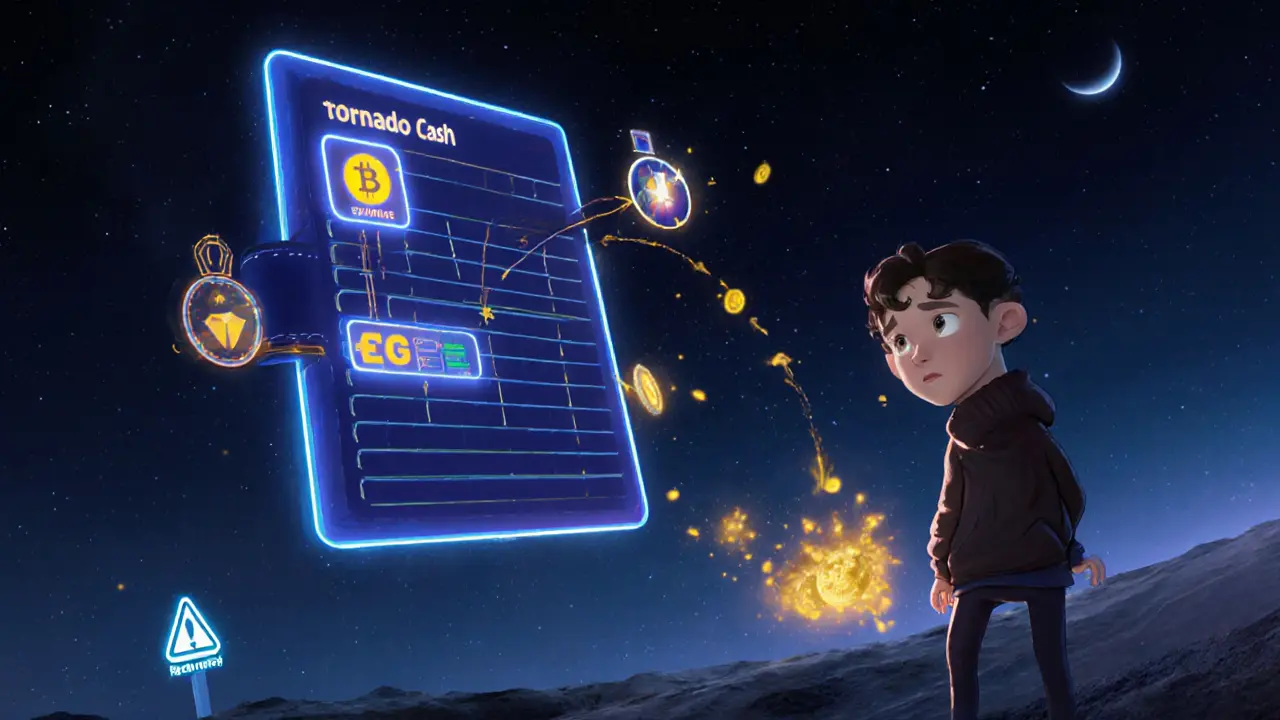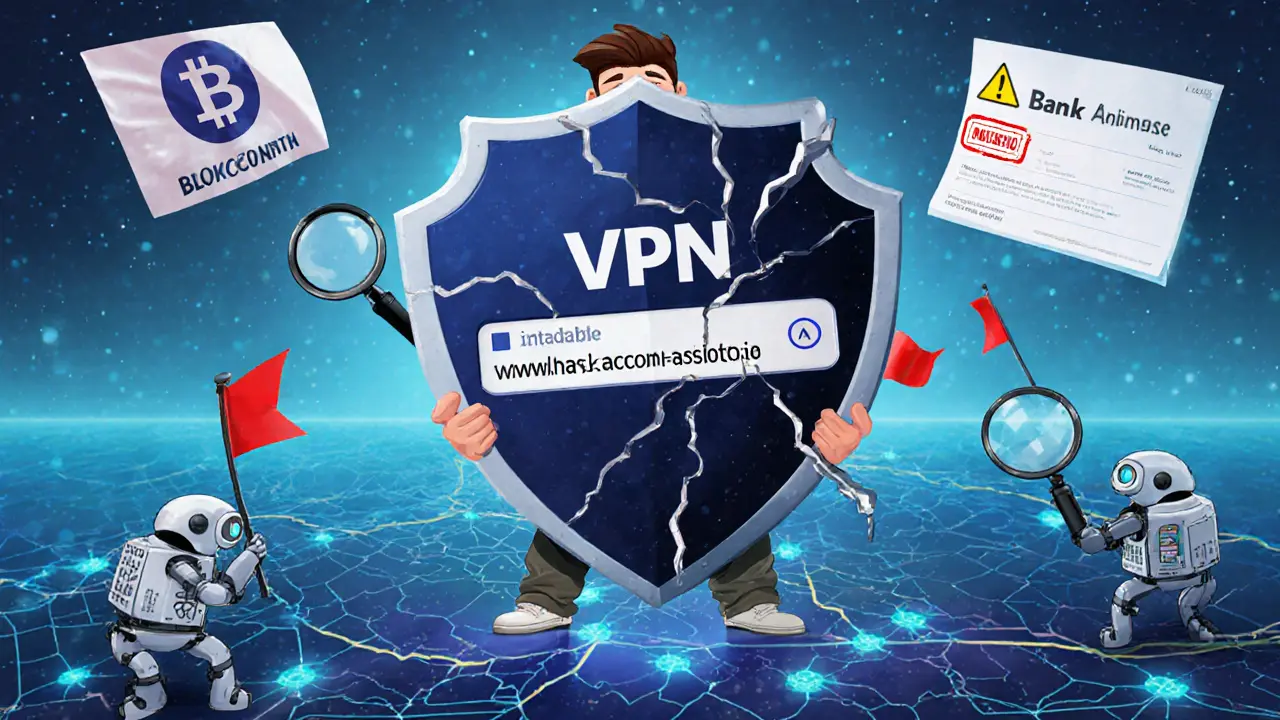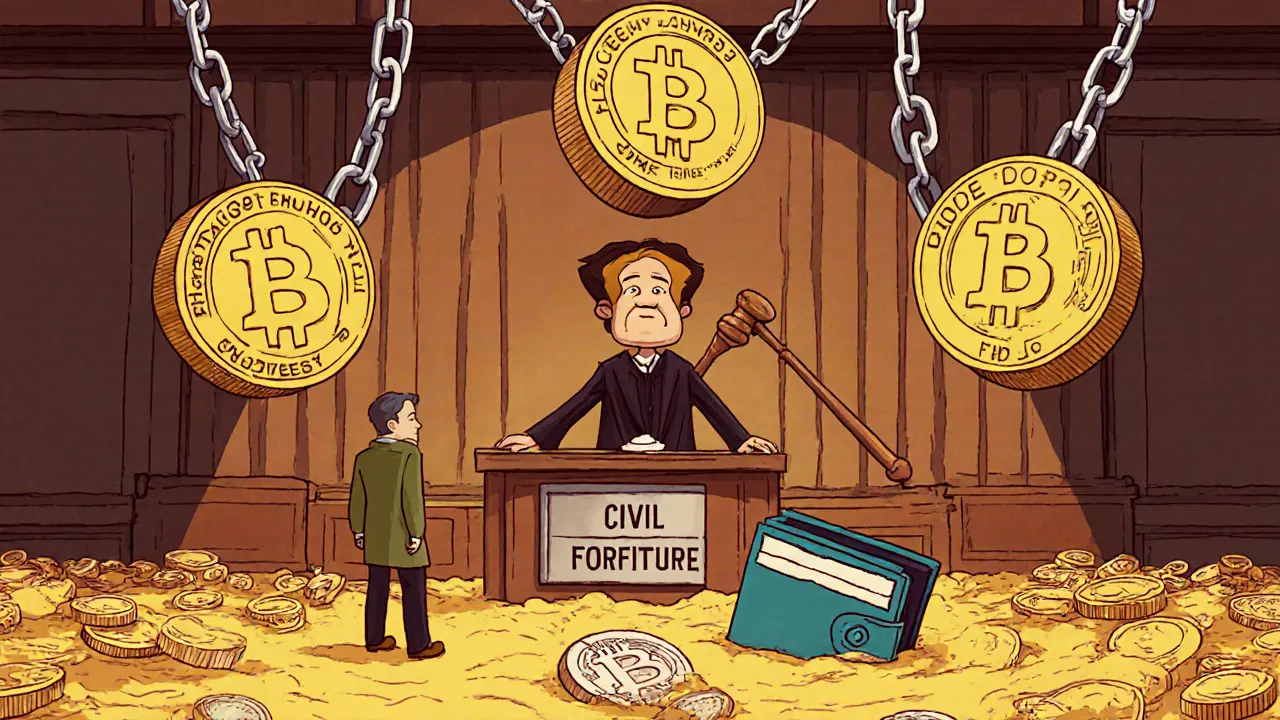 Nov, 15 2025
Nov, 15 2025
Crypto Detection Risk Calculator
Understand how your crypto transactions affect your risk of being detected. Based on the article: "Offshore Crypto Accounts: How Detection Works and What Happens If You Get Caught".
Risk Assessment
Select the transaction behaviors you've engaged in. Each behavior increases your risk of detection.
Reusing addresses creates a clear timeline of your activities.
These tools are now often sanctioned and trigger automatic alerts.
Automated systems flag transactions to sanctioned entities.
IP masking doesn't hide blockchain activity.
Financial institutions automatically flag large transactions.
Your Detection Risk Assessment
Your activity is unlikely to be flagged by regulatory systems.
Based on your selected behaviors, you have a 0% chance of being detected by blockchain analysis tools.
Recommended action: Continue following proper reporting guidelines and avoid high-risk transaction patterns.
People think offshore crypto accounts are invisible. That you can stash Bitcoin in a wallet somewhere overseas, never report it, and no one will ever find it. That’s a myth. And it’s getting more dangerous every year.
How They Find Your Offshore Crypto Accounts
You don’t need to be a hacker to get caught. You just need to use crypto the same way most people do - sending funds between exchanges, reusing addresses, or trying to hide money through mixers. Every move you make leaves a digital fingerprint. Blockchain analysis tools don’t guess. They track. Every transaction on Bitcoin, Ethereum, or any major chain is public. Wallet addresses might look random, but patterns don’t lie. If you send 0.5 BTC from Exchange A to Wallet X, then later send 0.3 BTC from Wallet X to Exchange B, analysts can link those two points. They don’t need your name. They just need the trail. Address clustering is one of the most powerful tools. If you use the same wallet to receive payments from multiple sources - say, your salary, a friend’s transfer, and a crypto gambling site - those addresses get grouped together. Even if you think you’re using "separate" wallets for different purposes, the system sees them as one. That’s how regulators build a full picture of your holdings. Then there’s address reuse. People think using the same Bitcoin address multiple times is harmless. It’s not. Every time you send or receive from that address, it adds another data point. Over time, that creates a timeline of your activity. Investigators can see when you bought crypto, when you moved it, and when you cashed out. That’s enough to trigger a report to tax authorities or financial crime units. Even privacy tools are becoming unreliable. Mixers like Tornado Cash and Blender.io were once thought to be untraceable. In 2022, the U.S. Treasury sanctioned both. Now, if you send funds through them, you’re dealing with a sanctioned entity. That alone can make you legally liable - even if you didn’t know it was illegal. Your exchange will flag the transaction. Your bank might freeze your account. You could be asked to prove you didn’t knowingly interact with a criminal tool. Dusting attacks are another sneaky method. Someone sends you a tiny amount of crypto - like 0.0001 BTC - just to see what you do with it. If you move that dust to consolidate your holdings, you reveal your other wallets. Suddenly, what you thought was hidden is now linked.Why Your VPN Won’t Save You
A lot of people think using a VPN or Tor hides them. It doesn’t. Not when it comes to crypto. VPNs change your IP address. That’s useful for privacy, but it doesn’t erase your blockchain history. If you log into Binance from a VPN in Singapore, then later send funds to a wallet that’s been flagged, investigators still see the wallet’s full transaction history. They don’t need your IP to know you own it. They just need the chain of transactions. IP correlation can still work. If you access a crypto exchange without a VPN, or if your VPN leaks your real location, your digital footprint gets tied to your wallet. Combine that with timestamps - say, you log in at 3 a.m. local time, and your wallet receives funds at the exact same time - and you’ve created a pattern that’s hard to explain away. The real risk isn’t your IP. It’s your behavior. If you’re consistently moving crypto through high-risk mixers, splitting funds into tiny chunks (peel chains), or sending money to known darknet market addresses, automated systems will flag you. No human needs to review your case. The algorithm does it.
Legal Consequences Are Not Theoretical
The penalties aren’t just fines. They’re jail time. In the U.S., the Bank Secrecy Act requires crypto exchanges to report suspicious activity. If you’re caught moving crypto offshore to avoid taxes or hide funds, you can be charged with money laundering, tax evasion, or violating sanctions. The Department of Justice has prosecuted people for using Tornado Cash - even when they didn’t know it was sanctioned. Ignorance isn’t a defense. In 2022, the U.S. Treasury fined a developer $600,000 for interacting with Tornado Cash. Another person faced criminal charges for using it to move stolen funds. Both were U.S. citizens. Neither was a criminal mastermind. They just thought they were being clever. In Australia, AUSTRAC requires exchanges to report any suspicious crypto activity within 24 hours. If you’re sending large sums to an offshore wallet and your exchange flags it, they’ll notify the authorities. You’ll get a call. Then a letter. Then possibly a raid. Asset forfeiture is real. If you’re accused of using crypto for illegal purposes, the government doesn’t need to convict you of a crime to seize your coins. They just need to prove the assets were involved in illegal activity. That’s called civil forfeiture. Your Bitcoin can be taken - even if you’re never charged.What You Can’t Hide Anymore
There are three things you can’t hide with offshore crypto accounts:- Your transaction history - Every transfer is on the blockchain. Forever.
- Your link to regulated exchanges - If you bought crypto on Coinbase, Kraken, or Binance, your identity is tied to those addresses. Moving it offshore doesn’t erase that link.
- Your cash-out points - Eventually, you’ll want to turn crypto into real money. That means using a bank, a payment processor, or a P2P platform. All of those require KYC. Once you cash out, your offshore holdings become traceable to your real-world identity.
